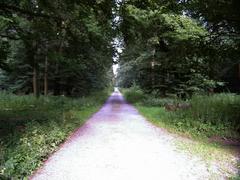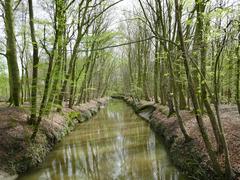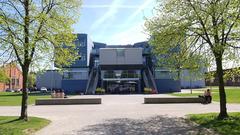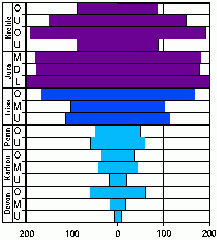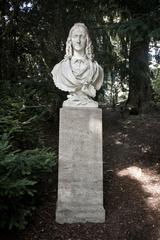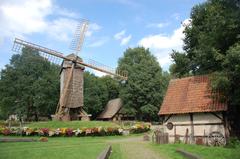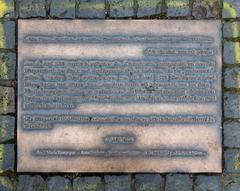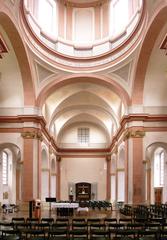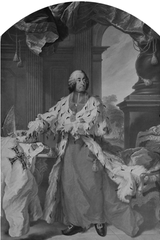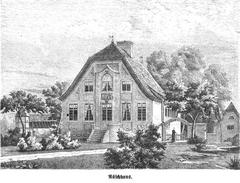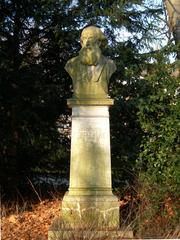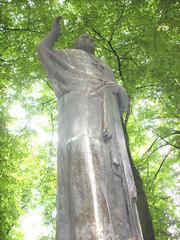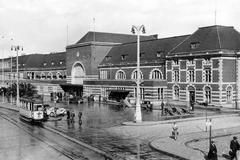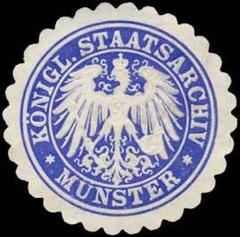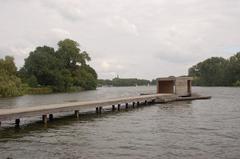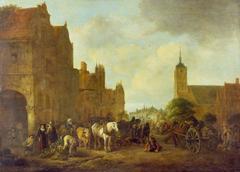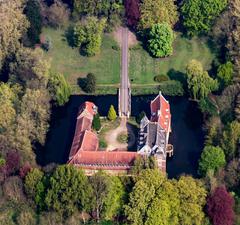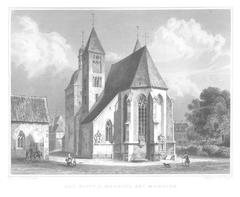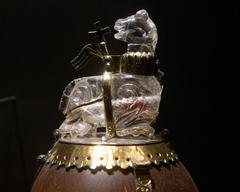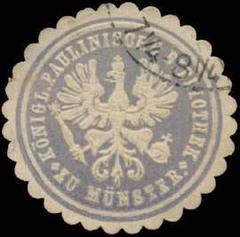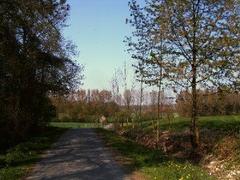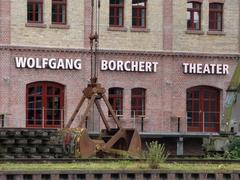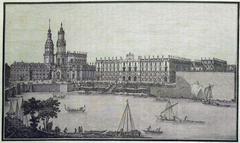
Visiting Wolbecker Tiergarten: Hours, Tickets, and Tips
Date: 18/08/2024
Introduction
Nestled in the heart of Münster, Germany, the Wolbecker Tiergarten is a captivating destination that seamlessly blends historical richness, ecological significance, and diverse recreational opportunities. This natural reserve, often referred to as a hidden gem, invites visitors to explore its ancient woodlands, picturesque lake, and historic hunting lodge. The park’s origins trace back to the medieval period when it served as a hunting ground for the bishops of Münster, adding a layer of historical depth to its natural beauty (NABU Naturschutzstation Münsterland). Over the centuries, the Wolbecker Tiergarten has evolved, undergoing significant transformations that have enhanced its ecological and cultural value. Today, it stands as a Natura 2000 site, recognized for its role in preserving biodiversity and supporting rare and endangered species. This comprehensive guide will delve into the fascinating history of Wolbecker Tiergarten, provide essential visitor information, and highlight the must-see attractions that make this park a must-visit destination for nature enthusiasts and history buffs alike.
Table of Contents
- Introduction
- History and Significance
- Ecological Importance
- Conservation Efforts
- Cultural and Recreational Value
- Notable Features and Attractions
- Visitor Information
- Educational and Research Opportunities
- Nearby Attractions and Travel Tips
- FAQ
- Conclusion
History and Significance
Historical Background
The Wolbecker Tiergarten, located in Münster, Germany, is a historically rich and ecologically significant area. Its origins date back to the medieval period when it served as a hunting ground for the bishops of Münster. The term “Tiergarten” translates to “animal garden,” reflecting its initial use as a game reserve. The forest was part of the extensive landholdings of the Prince-Bishops of Münster, who used it primarily for hunting and timber production.
Evolution Over Centuries
Over the centuries, the Wolbecker Tiergarten has undergone significant transformations. During the 19th century, systematic forestry practices were introduced, which included the planting of non-native tree species and the construction of drainage systems to convert wetlands into productive forest land. This period marked a shift from the forest’s original use as a hunting ground to a managed forest aimed at timber production.
Modern-Day Significance
Today, the Wolbecker Tiergarten is recognized as a vital ecological and recreational area. It is designated as a Natura 2000 site, a network of nature protection areas within the European Union. This designation underscores its importance in preserving biodiversity and protecting various habitats and species. The forest is home to a diverse range of flora and fauna, including several rare and endangered species.
Ecological Importance
The Wolbecker Tiergarten is particularly noted for its ancient oak and beech forests, which provide a habitat for numerous species of birds, insects, and mammals. The forest’s ecological significance is further highlighted by its designation as a “Naturwaldzelle” or natural forest cell. This means that certain areas of the forest are left unmanaged, allowing natural processes to occur without human intervention. This approach promotes biodiversity and helps in the study of natural forest dynamics.
Conservation Efforts
In recent years, significant conservation efforts have been undertaken to preserve and enhance the ecological value of the Wolbecker Tiergarten. One notable initiative is the establishment of a 50-hectare “Wildnisgebiet” or wilderness area in the southern part of the forest. This area was created following a severe storm in 2010 that caused extensive damage to the old-growth trees. The wilderness designation aims to promote natural regeneration and increase biodiversity.
Cultural and Recreational Value
Beyond its ecological importance, the Wolbecker Tiergarten holds significant cultural and recreational value. It serves as a popular destination for outdoor activities such as hiking, cycling, and bird-watching. The forest’s well-maintained trails and scenic landscapes attract numerous visitors each year, making it an essential part of the local community’s recreational infrastructure.
Notable Features and Attractions
Fürstbischöfliches Jagdhaus
The Wolbecker Tiergarten boasts the Fürstbischöfliches Jagdhaus, a historic hunting lodge that dates back to the time of the Prince-Bishops. This lodge serves as a reminder of the forest’s historical use as a hunting ground and adds a cultural dimension to the visitor experience.
Angelaue
Another significant attraction is the Angelaue, a diverse wetland area located to the north of the forest. This area is characterized by its rich biodiversity, including various bird species such as the kingfisher, which can often be seen along the Angelbach stream. The Angelaue also features a nature trail that provides educational information about the local ecosystem and its inhabitants.
Visitor Information
Accessibility
The Wolbecker Tiergarten is easily accessible from the city of Münster. Visitors can reach the forest by taking the R22 bus line from Münster Hauptbahnhof to the Wolbeck-Am Tiergarten stop. For those who prefer cycling, there are bike rental services available, and the forest is well-connected to the regional cycling network.
Visiting Hours and Tickets
The Wolbecker Tiergarten is open to visitors year-round, with no specific visiting hours as it is a natural reserve. There are no entrance fees, making it an affordable destination for all. However, certain guided tours or special events may have associated costs, so it’s advisable to check the NABU Naturschutzstation Münsterland website for the latest information.
Visitor Tips
To ensure a safe and enjoyable visit, it is important to follow certain guidelines. Visitors are advised to stay on designated trails to minimize their impact on the environment. Additionally, dogs should be kept on a leash, especially during the breeding season of ground-nesting birds. For those interested in bird-watching, early morning or late afternoon visits are recommended, as these are the times when bird activity is highest.
Educational and Research Opportunities
The Wolbecker Tiergarten offers numerous educational and research opportunities. The forest’s diverse habitats and species make it an ideal location for ecological studies and environmental education programs. Various organizations, including the NABU Naturschutzstation Münsterland, conduct research and offer guided tours to educate the public about the importance of conservation and biodiversity.
Nearby Attractions and Travel Tips
While visiting the Wolbecker Tiergarten, you may also want to explore other historical sites in Münster, such as the Münster Cathedral and the Prinzipalmarkt. These nearby attractions offer a glimpse into the rich cultural heritage of the region.
FAQ
What are the visiting hours for Wolbecker Tiergarten?
The Wolbecker Tiergarten is open year-round with no specific visiting hours.
Are there any guided tours available?
Yes, guided tours are available through the NABU Naturschutzstation Münsterland. Check their website for the latest schedule and fees.
Is there an entrance fee?
No, there is no entrance fee to visit the Wolbecker Tiergarten.
Conclusion
The Wolbecker Tiergarten is a unique and valuable natural area that offers a blend of historical, ecological, and recreational experiences. Its rich history, diverse ecosystems, and well-maintained facilities make it a must-visit destination for nature enthusiasts and history buffs alike. By preserving and promoting the forest’s natural and cultural heritage, the Wolbecker Tiergarten continues to play a crucial role in the region’s environmental and recreational landscape.
For more detailed information, you can visit the NABU Naturschutzstation Münsterland and Komoot websites.
References
- NABU Naturschutzstation Münsterland. (n.d.). Wolbecker Tiergarten. source
- Komoot. (n.d.). Hiking in Wolbecker Tiergarten. source
- Birdingplaces. (n.d.). Wolbecker Tiergarten. source
- Audiala. (n.d.). Wolbecker Tiergarten. source
- Alles Münster. (n.d.). Mit Alles Münster zum Wolbecker Tiergarten. source
